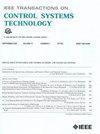使用硬件可编程卡尔曼滤波器库进行适应网络攻击的状态估计
IF 4.9
2区 计算机科学
Q1 AUTOMATION & CONTROL SYSTEMS
引用次数: 0
摘要
传感器估算系统可提供有关网络物理设备状态的重要信息。这些设备通常在计算资源有限的环境中运行。在这种情况下,它们很容易受到网络攻击,尤其是旨在降低其处理能力并有效使其丧失工作能力的攻击。本文介绍了在计算节点丢失的情况下,调整估算器算法并在幸存硬件上重新编程的方法。为使传感器-估算器系统做好降级准备,开发了以下协同设计步骤:1) 将估计算法--卡尔曼滤波器(KF)库--进行分布式处理,以便在一系列现场可编程门阵列(FPGA)上实现多个元素滤波器;2) 使用法德耶娃消除法在 FPGA 上对传统 KF 的矩阵运算进行编程。攻击结束后,利用存活 FPGA 的动态部分重新配置(DPR)实现滤波器组的调整。高权限代理会监控所有元素滤波器的可能性(这是衡量当前哪些滤波器能提供最佳估计值的标准),并用最有可能的滤波器替换滤波器库中最不可能的元素。后者被加载到剩余 FPGA 的空闲结构上,而这些单元正在运行其他元素过滤器,以便不间断地处理传感器数据。我们已在一个原型系统上演示了他们的方法,该系统使用雷达传感器来估计机动无人水面飞行器(USV)的运动学特性。本文章由计算机程序翻译,如有差异,请以英文原文为准。
State Estimation Adaptable to Cyberattack Using a Hardware Programmable Bank of Kalman Filters
Sensor-estimator systems provide critical information on the state of cyber-physical plants. Often, these units operate in an environment of constrained computational resources. This condition makes them vulnerable to cyberattacks that aim especially to degrade their processing capability and effectively incapacitate them. In the event that computational nodes are lost, an approach to adapt the estimator’s algorithm and reprogram the adapted form on the surviving hardware is presented. To prepare the sensor-estimator system for degradation, the following co-design steps are developed: 1) the estimation algorithm, a bank of Kalman filters (KFs), is distributed so that multiple elemental filters are implemented on a collection of field-programmable gate arrays (FPGAs) and 2) the matrix operations of the conventional KF are programmed on the FPGAs using Faddeeva’s elimination. After the attack, adaptation of the filter bank is realized by leveraging dynamic partial reconfiguration (DPR) of the surviving FPGAs. A high-authority agent monitors the likelihood of all elemental filters, a measure of which filters currently provide the best estimates, and replaces the least likely elements of the bank with the most likely ones. The latter are loaded onto the freed-up fabric of the remaining FPGAs, while these units are running other elemental filters in order to process sensor data without interruption. We have demonstrated their method on a prototype system that uses a radar sensor to estimate the kinematics of a maneuvering unmanned surface vehicle (USV).
求助全文
通过发布文献求助,成功后即可免费获取论文全文。
去求助
来源期刊

IEEE Transactions on Control Systems Technology
工程技术-工程:电子与电气
CiteScore
10.70
自引率
2.10%
发文量
218
审稿时长
6.7 months
期刊介绍:
The IEEE Transactions on Control Systems Technology publishes high quality technical papers on technological advances in control engineering. The word technology is from the Greek technologia. The modern meaning is a scientific method to achieve a practical purpose. Control Systems Technology includes all aspects of control engineering needed to implement practical control systems, from analysis and design, through simulation and hardware. A primary purpose of the IEEE Transactions on Control Systems Technology is to have an archival publication which will bridge the gap between theory and practice. Papers are published in the IEEE Transactions on Control System Technology which disclose significant new knowledge, exploratory developments, or practical applications in all aspects of technology needed to implement control systems, from analysis and design through simulation, and hardware.
 求助内容:
求助内容: 应助结果提醒方式:
应助结果提醒方式:


